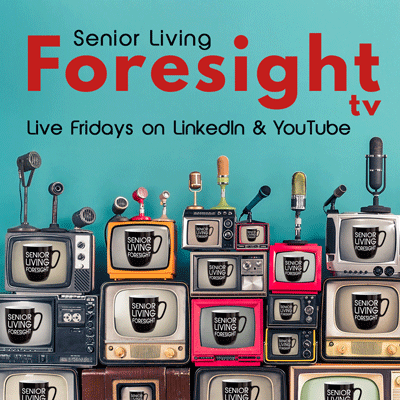A great guide to writing press releases that will get published.
The essence of a proactive publicity program, in which you initiate contact with the media, is this: regularly send stories (news or feature items) to the media that they can publish or air, in the format they want (Press Releases). That’s it. That’s the backbone. Everything else is artistry, based on more and more sophisticated understanding of the media and journalistic principles. But the basics of proactive publicity for your retirement community are straightforward and easy to implement. So, let’s breakdown the above terms in the context of your relationship with the media. )
1. Regularly.
This means that consistently, systematically, and strategically you put your community’s name, culture and lifestyle in front of your media. Basically, you send them your calling card. If done well, it’s a “gift” because it’s pretty, something they want, and reduces their workload. After they’ve received several of these gifts, they’ll start trusting you and looking forward to your continued contact. )
2. Send.
Today this means using email and putting your message in the body of the email, rather than in an attachment. Reporters and editors prefer to see what you’re sending immediately. Additionally, they needs everything NOW to meet constant deadlines. So another fast way to reach them directly is through their website. You may have to search a while but every media website I’ve seen has a mechanism on it somewhere that you can use to submit calendar, news, or feature items. Some even list reporter’s/editor’s names, email addresses, and the subject areas they tend to cover (their beats). “About Us” and “Contact Us” is the most common place to find this information. Once you’ve emailed your Press Release, you can, if you like, follow up with a printed version via snail mail. But it’s not expected and it won’t improve your chance of getting coverage. )
3. Your local media.
These are the reporters, bloggers and editors in your locale who sift through, choose, and broadcast the news and other human interest stories. Your “Media Distribution List” is the foundation of your proactive publicity program. You need to create it first and then keep it up to date. Many people believe that in order to get a media coverage, you have to know an editor or reporter. That simply isn’t required. In fact, the media will be more open to a personal relationship with you after you’ve sent them several stories they’ve used. )
4. Newsworthy.
Just as senior living markets to specific prospects – seniors, adult children, and referral sources – each medium has a target audience. Daily newspapers, television, radio and some online venues are mass media, going after the largest audience they can attract. But there are also niche media, focusing on smaller geographic areas, demographic groups, or specific topics. Media is big business; their “product” is information (stories) that apprise, enlighten and/or entertain their audience. Their revenue comes from advertising and subscriptions, so the more appealing the articles they offer, the more they can charge. So, they are constantly on the lookout for newsworthy stories, specifically those that effect most or a large portion of their audience, matter deeply to a particular subgroup of their audience, or have universal, emotional appeal. )
5. Press Releases.
This is the document you submit, formatted and structured in the way the media wants. You can find numerous explanations and samples of Press Releases all over the Internet. With these basics under your belt, you can start sharing the many “good news” stories that constitute life in your community – from your marketing events, to resident features, to new programs or services you offer. The trick to implementing proactive publicity is the same one good doctors use when treating your residents – start low and go slow!
In other words, start by sending a two or three sentence calendar item to a local medium and then build from there. Once you’ve sent two or three they’ve used consecutively, you’re in. You will become a reliable source they cover and turn to. But remember, it’s a very different story if the media contacts you – that would be reactive publicity. The media controls any story they initiate and their slant (whatever it may be) prevails. So anytime the media contacts you, review your company’s policies, procedures and training before you talk to them. And, if their story involves breaking news, call in all the public relations, media relations, or crisis communications expertise you have available. No matter how innocuous the subject matter seems, you don’t want to get up close and personal with a seasoned reporter without professional backup.
If you like this article (or even if you don’t) it would be a great honor to have you subscribe to our mailing list HERE.









